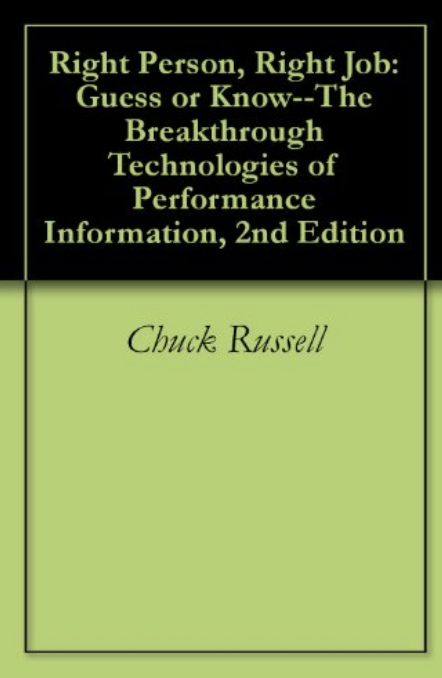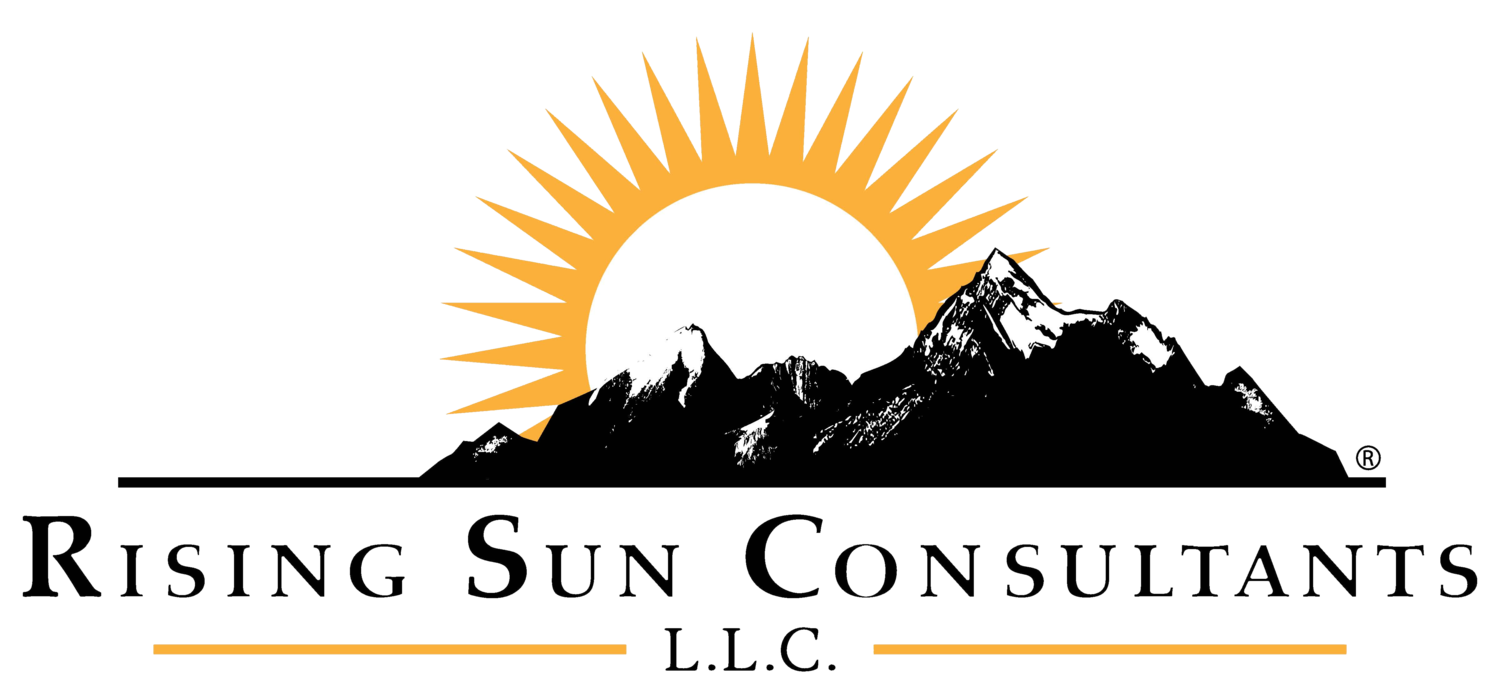BOOK FACTS
- Title: “Right Person – Right Job: Guess or Know”
- Author: Chuck Russell
- Publisher: Johnson and James
- Copyright: 1996
- No. of Pages: 96
- No. of Chapters: 6
RATING (5 IS A MUST READ – 1 IS LOW INTEREST IN READING)
Readability: 5
Maintains Attention: 3
Applicability of Information: 4
REVIEW
Chuck Russell’s “Right Person – Right Job: Guess or Know” is an interesting and helpful book regarding the process and effects of hiring the right employees. This book is a quick and easy read. Russell presents his thoughts and information in an organized and understandable manner.
Russell provides a brief look at the “old’ process of hiring and how it has dramatically affected employees’ performance or lack of performance. He discusses how businesses have placed their focus on employees who will never be high performers at the expense of neglecting mediocre performers who have the potential to be high performers if the proper investments were made. Russell shares that there are three opportunities to impact employee performance. The first opportunity, the selection process, is where a majority of this book is focused.
Russell does an excellent job connecting the fact that “It is difficult and expensive to train your way out of a bad hiring decision.” He challenges old thinking about how to hire effective employees in today’s market. He also discusses different aspects of what to look for when hiring new employees.
A large majority of Russell’s book is focused on discussing the uses and misuses of testing and assessments within the employee selection processes. He highlights a number of different tests and assessments that are available to support businesses today in employing the right people. Russell also is very helpful in providing some basic guidance in legal matters pertaining to bringing on employees. He shares his thoughts on how tests and assessments utilized during a selection process can prevent legal problems and, if misused, can lead to or support legal actions by the prospective employee.
Overall, Russell’s book, “Right Person – Right Job: Guess or Know” is a simple and clear introduction to the world of hiring employees. He provides a brief and concise case for the appropriate use of testing and assessments in the selection process. Russell draws obvious connections to the benefits of placing adequate time, resources, and energy in the hiring of the right employees for the long term success of any business.
SUMMARY OF MAIN POINTS
One of Russell’s main premises is, “Businesses spend an enormous amount of time, energy, and money in a never-ending effort to train, coach, or motivate marginal employees to a level of merely adequate performance.” Russell shares his rule of thirds, “In any population of people, whether it is composed of managers, salespeople, mechanics, or hockey players, one third are top performers; one third are okay performers; and one third are questionable performers.” One of the major problems that businesses face today is “Businesses tend to celebrate the terrific performers, lament the questionable performers, and ignore the OK performers.” according to Russell.
Russell shares three opportunities to impact the performance of employees:
- The Front Door
- After They are Hired
- The Back Door
The Front Door is the selection of employees into the business. Russell says, “The Selection Process is clearly the most important point of action in terms of impacting the productivity and profitability of a business.’
After they are Hired is all of the efforts made to support and motivate an employee to high performance after they have been selected into the business. This includes actions such as training, coaching, and supervision.
The Back Door is the effort made when an employee is not performing or is choosing to leave the business. At this point a business oftentimes either “redeploys the marginal employee to another department and hope for better results, or to exit the employee from the company.”
Russell spends a majority of this book discussing ideas and alternatives to the first opportunity, The Front Door. Russell uses the premise that “It is difficult and expensive to train your way out of a bad hiring decision.” for a rationale to the new paradigm for understanding employees and their performance. He shares three critical components to a foundation for hiring the right employees:
- Attitude (Company Fit)
- Technical Competencies (Skills Match)
- Job Fit (An individual’s cognitive abilities, interests, and personality traits)
Russell discusses the role that testing and assessments can play in hiring the right employees for a business (according to the aforementioned components of a foundation for hiring the right employees). He shares various legal ramifications for using the correct tests and assessments in the appropriate situations along with the potential consequences of misusing tests and assessments.
Russell starts by sharing a brief history or evolution of assessment tools. He also shares the various types of tests and assessments that are available today to support a business in the hiring process. As part of his discussion on tests and assessments, he shares the pros and cons of specific tests and assessments that are available. Russell provides a helpful chart to depict which types of assessments are most effective in specific situations.
Ultimately, Russell offers a thorough look at why it is in a business’s best interest to focus more time, resources, and energy in the hiring of the right employees. He clearly states that it is in the hiring process that the most effective and efficient use of time, energy, and resources is used to support employees in being productive and high performers.
CALL TO ACTION
As a result of reading “Right Person – Right Job: Guess or Know”, the following five strategies jump out as immediate steps to effective employee performance:
- Develop a description of “Company Fit” for your business by creating a clear list of attitudes, mannerisms, ethics, etc. that you expect from every employee.
- Develop a set of skills for each position (job) that will enable the employee to be productive and high performing.
- Develop a description of “Job Fit” for your business by creating a clear list of cognitive abilities, interests, and personality dynamics that are consistent with each position (job) in the business.
- Review your current hiring process for each position in your organization and determine if the position descriptions and hiring process meet the Company Fit, skills, and Job Fit you have developed for each position.
- Research the tests and assessments described and discussed in “Right Person – Right Job: Guess or Know” to determine how you can enhance your current hiring practices to assure the proper employees are hired for your business.


